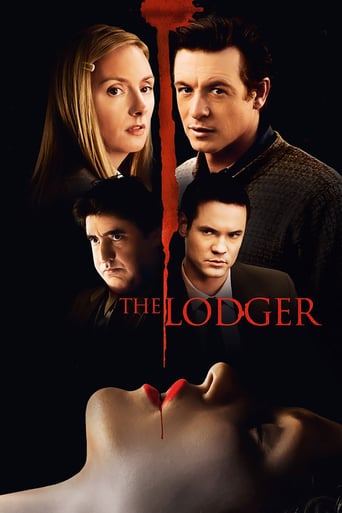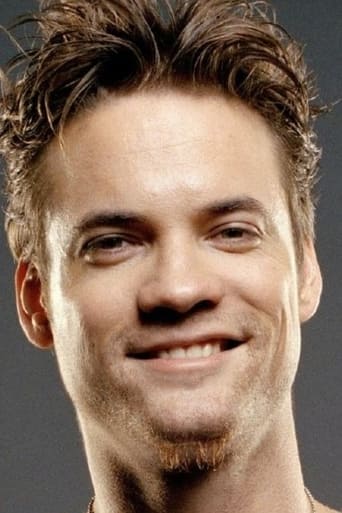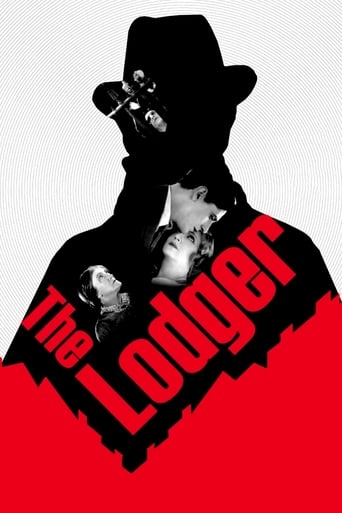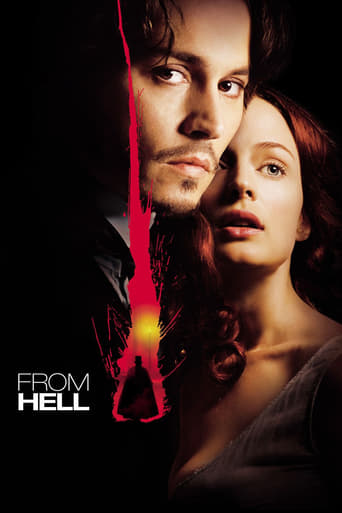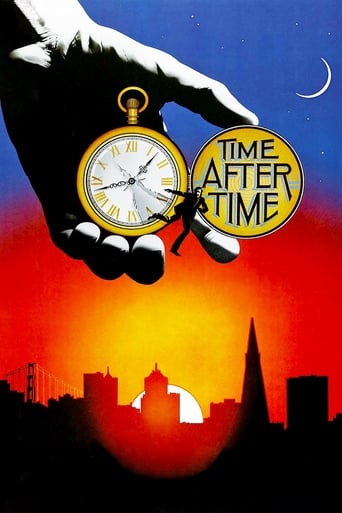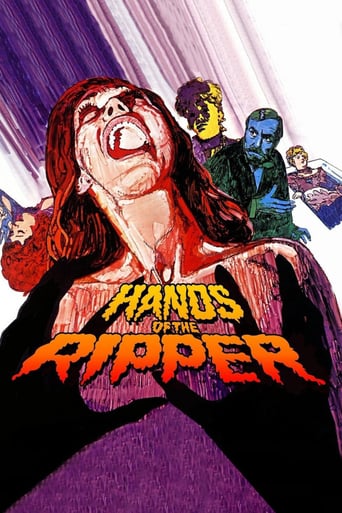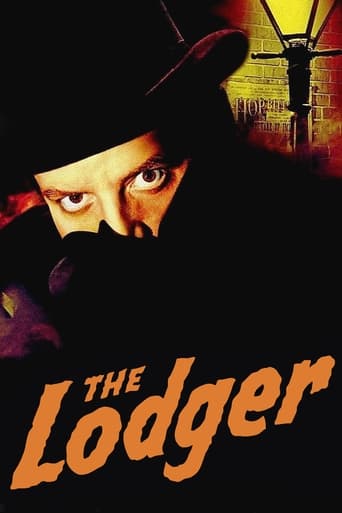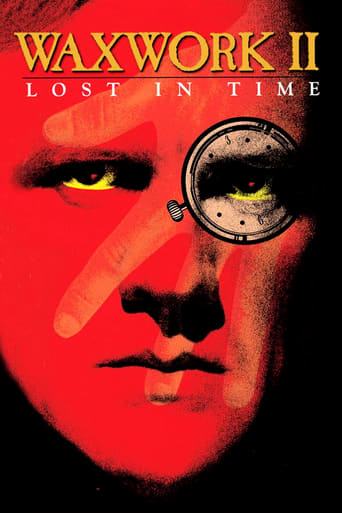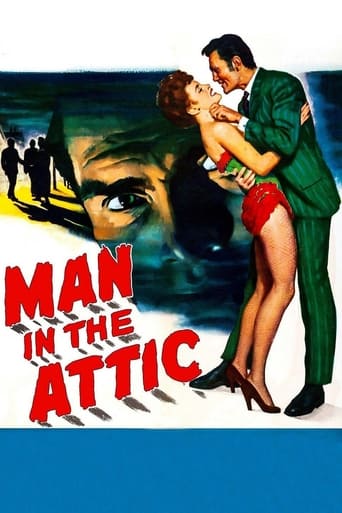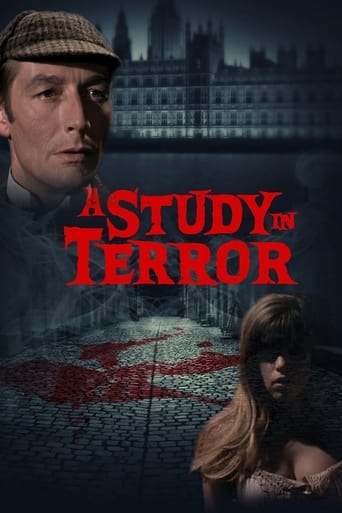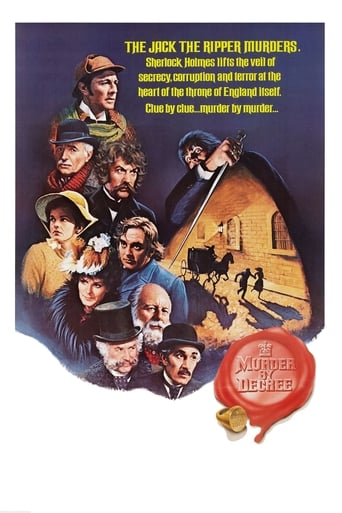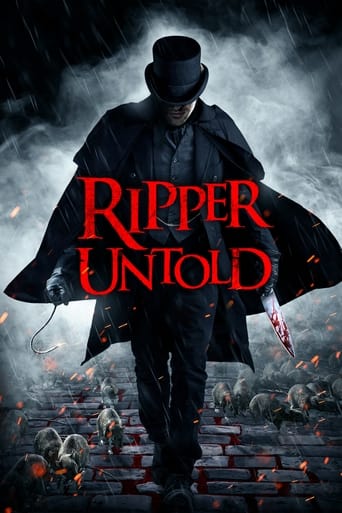The Lodger (2009)
Follows a seasoned detective on the trail of a ruthless killer intent on slaughtering prostitutes along West Hollywood's Sunset Strip. It appears that the murderer's grisly methods are identical to that of London's infamous 19th century psychopath Jack the Ripper – a relentless serial killer who was never caught by police. To make matters worse, the detective soon notices the parallels between the crimes committed by the West Hollywood stalker and those of a serial murderer incarcerated years ago. Could the wrong man be behind bars?
Watch Trailer
Cast


Similar titles
Reviews
Unfortunately THE LODGER is one of those films which loses me from the outset thanks to the all-too-glossy "look" and feel. Given the nature of the subject matter this should be a production crying out for grim and gritty styling, but instead this has a slick sheen of the kind seen in US TV shows like CSI.In addiction, the story is nothing to write home about, despite the promise inherent in the premise. It's an erstwhile remake of the silent Hitchcock movie of the same name, presented in the modern day, with two seemingly separate plot strands: weary detectives are tracking a modern day Jack the Ripper, while a houseowner gets to grips with her mysterious new tenant.Sadly, the detective plot is superficial and largely uninteresting, purely because it's so hackneyed; even a solid actor like Alfred Molina can do little with the material, which I found boring more than anything else. Meanwhile, the 'tenant' plot is equally lame, having been done to death in many a 1990s-era psycho-thriller, and the characters are so underwritten as to be cardboard.Lame attempts to build mystery are all too familiar and the double-twist ending is predictable in the extreme. Sadly, there are all too many of these middle-of-the-road thrillers churned out by Hollywood; they contain zero memorable material yet at the same time aren't bad enough to stay in the memory for the wrong reasons. They're just insipid and entirely forgettable.
Here's the opening scene. The camera moves slowly, at a stroller's pace, along a Los Angeles sidewalk. It encounters a gate with a "Room For Rent" sign. The camera glides onto the pathway between the untended gardens of weeds towards what passes in Los Angeles for an ominous house. Then it drops to a close up of a newspaper near the doorstep.Is this a point-of-view shot, with the camera showing us what the person is seeing? No. A hand reaches down, picks up the newspaper, and a blond housewife (Davis) strolls back through the door.What it is, boys and girls, is an imitation of one of Hitchcock's swooping introductions, ripped off shamelessly from "Psycho" and "Frenzy", and that newspaper on which so much attention is lavished and which was of significance in "Psycho" plays no further part in the plot.Other Hitchcock ripoffs, just from the opening few minutes: (1) The shots inside the house show the blond's mean-looking, greasy-haired, scowling husband (Logue) eating his breakfast. The camera clearly shows us the slice of ham, the scrambled eggs, the two slices of toast, which the ugly husband is buttering wordlessly. Meanwhile the TV in the background is telling us about the murder of a prostitute. It all mixes food, sex, and murder, as so many Hitchcock movies did, only this is without taste or humor. (2) The rather drably groomed blond wife is watching her husband slice away at his food. She holds an abnormally large glass of orange juice. Why? So she can lift it and drink out of it and we can see the distorted image of hubby through the bottom of the glass, just as in Hitchcock's "Spellbound." (3) The TV in the background carries on about the murder. The sound is blurred except for one word, repeated several times, which leaps out loudly at the view -- "knife." Lifted in its entirety from Hitchcock's first talkie, "Blackmail." There isn't space enough to go on with this, nor any impulse to do so. I'd rather examine the contents of a spitoon. But let me get a few other annoyances out of the way. Periodically, for no discernible reason, the director shoots scenes in fast motion. Accelerated motion has its place. It was used to good symbolic effect in movies like "Koyaanisqatsi" and even the otherwise dreary "The Bonfire of the Vanities." Here it's used pointlessly. Every shot of freeway traffic shows us vehicles speedily zipping by instead of crawling along in a state of fury. There are two scenes of Hope Davis doing housework -- speeded up. (A woman doing HOUSEWORK is speeded up! And this is not a comedy!) Another scene has the camera strapped to Davis's chest, a device which tends to keep the subject at the same distance from the camera and relatively stable in image, while her environment revolves in a jarring manner around her. Why? Well, it's one of those mysteries that must remain unsolved, like the Jack the Ripper murders.Some of those techniques are newly established clichés but many of the old ones appear here as well, coated with verdigris. A man sits at his desk in silence. A hand reaches in from out of frame and grabs his shoulder, accompanied by a loud sting on the sound track -- but it's just a friend, who chuckles at having scared his buddy. A pimp is called in for questioning and he wears the feathers and furs common to pimps in 1970s movies. But why go on? Alfred Molina has a great face, flabby and imposing. Even his name is impressive; in Spanish it means "great big mill." He's the overzealous policeman on whom suspicion falls. That face belongs on a baritone in an Italian opera. Rachael Leigh Cook's name is listed way up there in the credits but she has little screen time. The chief female figure is that blond housewife played by Hope Davis and she doesn't do badly by the part, as long as it call for a quiet intensity, whether the intensity stems from dissatisfaction with her family or horniness.Did I mention that this is adapted from a book and is the fourth or fifth remake of the story? All the preceding attempts are better than this one, although this one at least spares us two irritations -- the wobbling camera and the close ups of the screaming victims as the knife renders their flesh.The ending tries to link the Ripper murders to the Sunset murders of whores but makes no sense whatever. The dark, pretty, talented, intelligent Rebecca Pidgeon is wasted as an FBI agent forced to spout psychobabble that turns out to be one hundred percent wrong. (I speak to you as your psychologist. That will be ten cents.) Boy, is this tiresome.
I have an undying love of true crime movies. There is something automatically fascinating about a disturbing story of true crime when there is the added effect that it is at least loosely based on real events. It's one of the most important things that makes me love movies like Zodiac or In Cold Blood or Dog Day Afternoon or even Silence of the Lambs, even though the real life element of that one is, ah, a little less specific. The Lodger, as you know, was Alfred Hitchcock's first major film, made in 1927, well before sound. The new Lodger has a tough time justifying itself, but it is not entirely without effect.The movie tells the story of a mysterious recurrence of Jack-the-Ripper-style murders, although it takes the crimes out of the London fog and replaces it on the wet streets of Los Angeles. A series of brutal prostitute murders have been determined to be exact replicas of very specific Ripper murders, even positioning the bodies the same places and making similar efforts in geography. Complicating matters is the fact that a man has already been jailed and executed for the murders, which unfortunately start happening again. Meanwhile, an unhappy housewife across town is routinely abandoned by her deadbeat husband, who repeatedly tells her basically to take her medication and leave him alone, and by the way, why can't she make herself useful and find a lodger for that old shed in the backyard. Money doesn't grow on trees, woman.She does find a lodger, one who acts sufficiently mysterious and suspicious, and for a while the movie turns into your standard murder mystery thriller, although I was glad to see the addition in the third act of the clouding issue of an unstable mind. It's a story-telling technique that is very easy to screw up, but when it's used right it can add a whole different experience to an otherwise straight-forward and uninteresting story. It is not used here as well as I've seen it used before (at least in originality), but it's true that it adds a much-needed extra layer to an otherwise insufficient story. Unfortunately, because the rest of the movie is a murder mystery the style of which is far too familiar by now, the instability idea seems like an effort to add something to an otherwise weak movie, and it's just not enough to make the movie at all memorable. In fact, some moviegoers will find it outwardly laughable.Alfred Molina plays a detective who is striving to solve the case, although I would expect an actor of his caliber to be spending his time on better movies than this. Unfortunately, despite his performance and a number of other mildly impressive roles, the movie is also peppered with horrible acting and ridiculously badly written characters.The lodger himself, first of all, is of the variety that acts extremely suspicious in ways that could only possibly happen if he were really the killer. When the wife accidentally discovers him burning clothing in the barbecue, he calmly explains that he was just trying to dry them. In a good mystery, perfectly normal behavior is made to be suspicious by the context of other actions, the music, the performances, etc. Who the hell dries pants on a barbecue?There is also the issue of a psychologist who analyzes the police's evidence about the mysterious killer, and offers an explanation that is little more than a lot of wordy nonsense that sounds like it was thrown together by a Psychology undergrad at UCLA with no other purpose than to sound impressive. Sadly, it doesn't. The ex-wife of Molina's character is also a mental case herself who, for reasons that I won't reveal, is unable to stand the sight of her husband. When she does at one point in the film, she descends into a hysterical fit of screaming which, had it gone on for about another three seconds, would have been enough for me to give up and fling the DVD out the window.But the movie's biggest problem is that it comes off as a standard mystery, the first half of which is designed to show why everyone is a suspect and the second half designed to deliver a thrilling finale that, when it comes, just isn't all that thrilling. The murder investigation is full of movie-miracles (like a footprint which is leaked to the press and printed "actual size" on the front page of the newspaper) but the real letdown doesn't come until the final scene, lifted directly out of Psycho and full of psychobabble nonsense. And the psychologist's analysis, believe it or not, takes place before the actual arrest. Fastest mental analysis ever!! But it's not so much that the psychological explanation doesn't make sense as much as the fact that the reasons given may send your palm(s) flying rapidly to your forehead. So be advised
"The Lodger," now on DVD develops a storyline involving a tenant living with a lonely landlady and serial killings in the West Hollywood area of Los Angeles. The film seems to involve two separate stories, with different characters who meet in the final climactic finish; however, no closure is given to the story as the killer within "The Lodger," escapes capture. Alfred Molina, the lead in the film begins the story at the scene of a grisly murder and the picture revolves mostly around this character's attempts at tracking down an anonymous serial killer. The settings are primarily shot in the downtown Los Angeles area with several scenes from an urban neighbourhood contrasting the busyness of the city. The characters and lives of Detective Manning (Molina) are given an early initial reveal while the back stories of the landlady and the lodger are not given even a partial reveal until midway into the film. Near the end of the film the life of the lodger is given a partial reveal, which seems slightly disappointing.The original musical score that haunts the picture throughout really adds an entire dimension to the film that enhances the movie watching experience. The soundtrack begins early in the film, subtly and hovers in the background during many of the scenes. Composer John Frizzell produces an excellent composition that adds to the overall intensity of the film while highlighting certain climactic scenes. The musical score, while not taking center stage in the film makes "The Lodger," a more fulfilling visceral experience.Lighting, acting, and story development are each well done, but director David Ondaatje's use of Los Angeles city streets, in fast forward mode seems overly mysterious in tone. The movie begins with a CGI image of blood, in veins that transforms into the city streets of Los Angeles, and during the film several shots of traffic moving exceptionally fast break up the pacing within "The Lodger." Possibly symbolic of the transitory nature of the killer the streets of Los Angeles are shown throughout the movie to ease the pacing at certain key points in the film. As well, overhead shots of the sky, with clouds are meant to show the transition of time, but their symbolic interpretation seems ambiguous. On the acting side the portrayal of Rachel Leigh Cook as a somewhat distraught, lonely housewife is done with subtly and a flair for the under dramatic, that keeps the viewer's attention on the believability of the story. Other actors including; Alfred Molina as an over-worked detective, and Donal Logue as a potential suspect are especially well done and deliver realism to the story. In addition, the lighting, which takes place primarily in natural daylight, gives "The Lodger," an eerie feel as shots of alleyways and streets are shot in partial darkness.Director David Ondaatje, nephew of writer Michael Ondaatje delivers a strong film, surprisingly after only directing two previous feature films. Ondaatje switches often between the use of stead-cams and a hand held 35mm to display various shots of the Los Angeles landscapes and characters within the film. Often using medium shots at the beginning of a scene and then slowly rotating left or right as the director moves in for a close-up, Ondaatje's manages to keep the visuals interesting while keeping character interactions short. Many of the dialogue scenes between the landlady and tenant are kept to less than a minute, and often to less than thirty seconds. The quick changes between scenes and characters can be somewhat distracting, but Ondaatje is quickly moving the story along as the killer's vile habits are slowly given a reveal. Focusing on the killer's view or a knife blade the killer utilizes a mysterious quality, which while frustrating at times does manage to make the film slightly more intense. Another directing quirk from Ondaatje seems to be his love for filming feet as several frames are shot exclusively of women's feet and rarely of the killer's.The sets, actors, and filming techniques each do their part in delivering an excellent psychological thriller, that while overly sparse on the action scenes manages to hold the viewer's full attention throughout. The light musical compositions along with experienced actors are a bonus and both elements are able to develop a very intriguing story that delves into the motivations of a serial killer. "The Lodger," from relatively new director David Ondaatje does not give closure to the story, but the film, overall is very entertaining to watch.7 Creepy Skulls out of 10.

